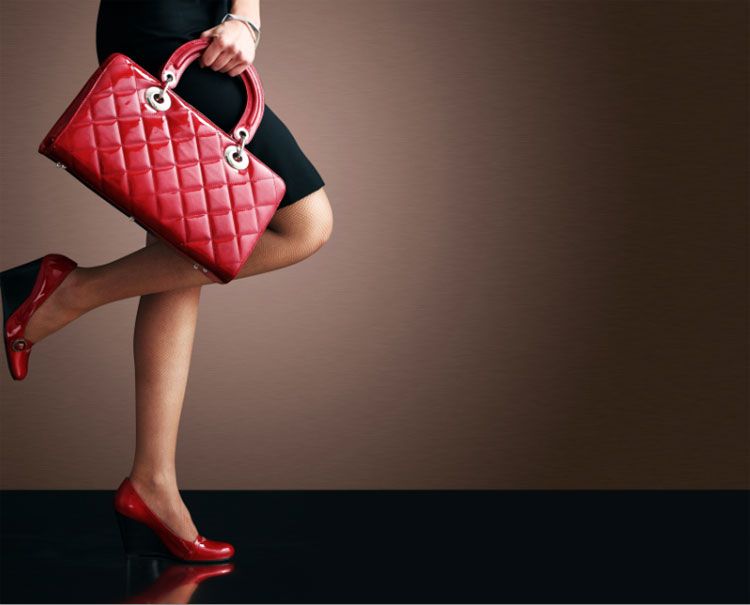
Photo Credit: ThinkStock/Goodshoot/Photos.com
On December 23, 2012 while many were out doing last minute holiday crisis shopping, a Financial Times article was published that discussed the new, complex nature of the state of luxury fashion. The reason this article is so compelling is that, arguably, some of the concepts presented can be expanded to clarify issues regarding the state of our own economy, and how the luxury segment may be affected by the Fiscal Cliff.
The FT article is called Fashion: Luxury's New Look, and it works with the idea that right now, after decades of conceptualizing luxury as one highly profitable sector, perceptions are changing. Many formidable brands, like Burberry, Louis Vuitton and Tiffany, had very soft growth in Q3 of 2012, yet balancing this, Hermes and Prada posted record profits. These and other similar data points have forced many in the luxury fashion industry to look at a more diffuse, evolved meanings of luxury, and how emerging markets have significantly impacted these markets and these meanings.

Now, say the authors, "...other characteristics appear equally significant, specifically ubiquity and rarity." These two concepts seem like diametrical opposites and especially in the luxury sector. Yet in the high end fashion bandwidth, they seem to have some internal symmetry, due to the ubiquitous high end brands like Ralph Lauren, Michael Kors and others, that have both extremely high end fashion dimensions, and less expensive, more accessible ones. These brands live with the rare brands, like Prada and Hermes, who do not have any type of brand diffusion, but keep their brands at one price, no matter what.
But that equidistant bifurcation of ubiquity and rarity has been tipped recently when, as the FT authors say “HSBC issued an analyst’s note calling ubiquity ‘the new buzzword for luxury’ and ‘a major concern.’" The concern surely must come from the idea that if a product is ubiquitous and could be accessed and acquired almost anywhere, could it still be considered a luxury item?

The general thinking up to now, is that a luxury item must have some inherent quality of scarcity and rarity if it is to be considered luxurious. But now? With so many brands and brand houses advancing quickly into emerging markets like China, the question posed by the FT authors is this: "...the need to reach new consumers is beginning to conflict with the perception among those consumers of what constitutes luxury." So, could the diverse bedfellows of ubiquity and rarity now be separating, due to emerging market success? This question appears to move beyond the metes and bounds of luxury fashion.
If the need to reach new markets implies a brand’s need to ubiquitize the product, get it known better in emerging markets, does this leave the idea of rarity and scarcity out in the cold? Or does it matter, as long as the high end product is bought by a willing consumer?
A movement toward answering these questions come from a reliable source dealing with the affluent. The American Affluence Research Group's Fall Survey 2012 looked at how and where wealthy consumers spend their money, targeting a cross-section of the 11.4 million households, making up the wealthiest 10% of U.S. households based on net worth.

These data showed an interesting result of what constitutes luxury to their research demographic, the Ultra High Net Worth population: some of the favorite purchasing brands of this sample were NOT Tiffany or Henri Bendel, but Costco, Target, Zappos, and Home Depot. Does this mean that the concept of ubiquity—accessibility to all luxury items all the time—is more attractive? Or does it mean that Costco and Zappos have more acceptable mid-level and high end brands to choose from and the UHNW population likes to shop quickly and move on to other more pleasurable pursuits? No one knows, which is one of the challenges of good market research—much of the time, it brings up more questions than answers.
Another issue concerning the ubiquity/rarity dichotomy has deeper implications, and this is how the mood of the aspirational buyer may have changed due to Fiscal Cliff economics. Any brand’s (whether it be fashion or apples) desire to reach the American aspirational consumer, also often called the High Net Worth consumer, might not have as favorable a sales volume result this year in contrast to other years.

Aspirational consumers are considered to be those, in general, who make over $250,000-$500,000 more or less, a year. And, as of this writing, due to the new tax laws passed that will save most everyone from falling over the Cliff right now, the aspirationals and UHNWs will pay more taxes—as those taxes have been raised for those with individual incomes of more than $450,000. What does this mean for luxury buyers? Might they tend to spend less on some luxury items than their non cliff-hanging Chinese or Indian counterparts? A possibility, but again, no one knows yet.
What is known is the idea of the Cliff won’t go away very soon. Many pundits think there will be more Cliffs in the future, and more patchwork to come from the fall or the partial fall taken by various groups. How this will affect the luxury segment is still unknown—an issue that by itself causes concern.
But from the diffuse luxury brands perspective, and the affluent research perspective, and from Fiscal Cliff playbook of only a few days, the immediate lesson learned is how new a day this one actually is, one where the old Alfred North Whitehead motto, “those who are ignorant of history are doomed to repeat it,” doesn’t hold much weight in the hard light of this new economic morning.
Many thanks to the Financial Times and to the authors of the article, Luxury: Fashion’s New Look: Vanessa Friedman, Rachel Sanderson and Scheherazade Daneshkhu.









